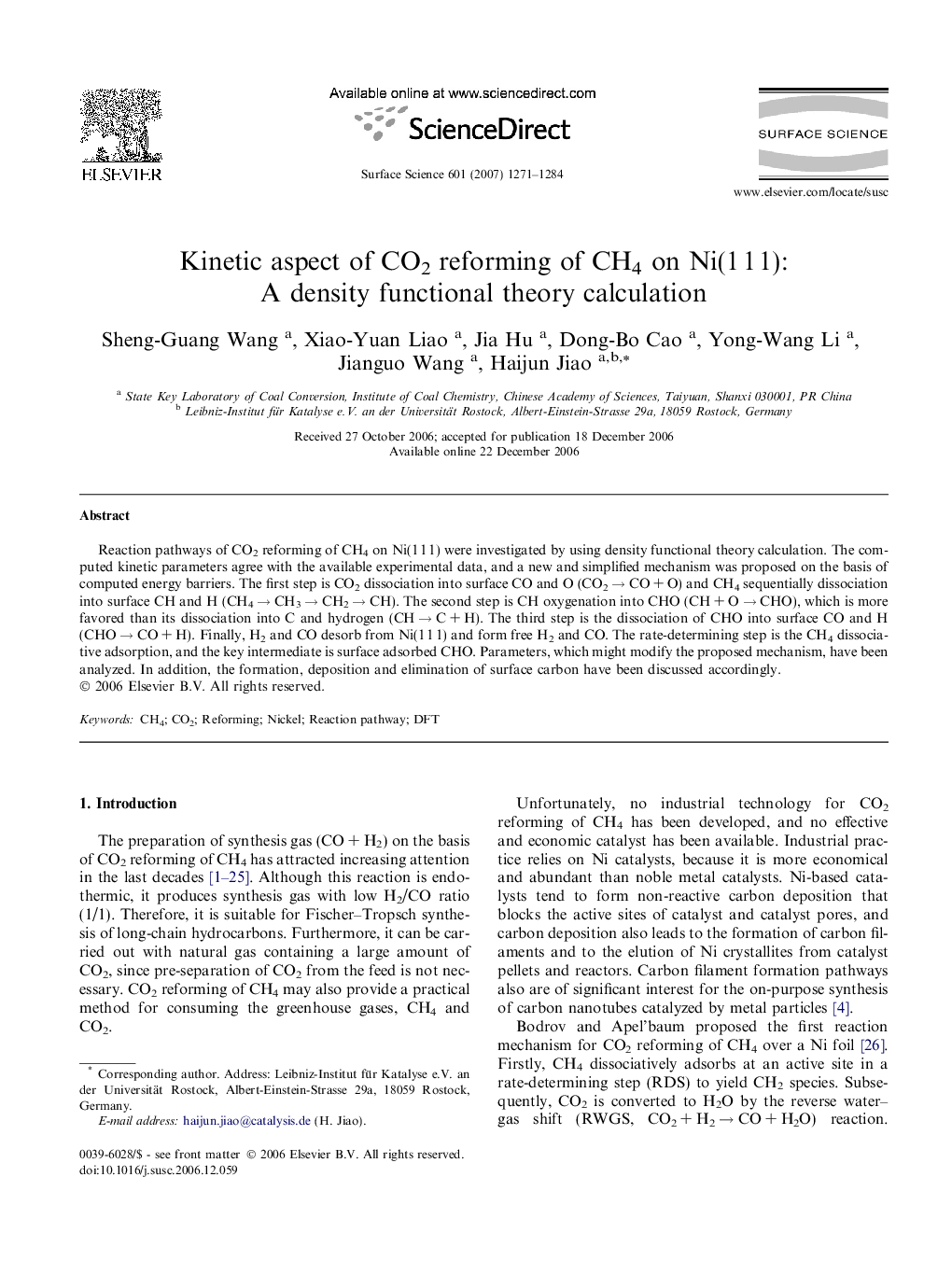| Article ID | Journal | Published Year | Pages | File Type |
|---|---|---|---|---|
| 5426071 | Surface Science | 2007 | 14 Pages |
Reaction pathways of CO2 reforming of CH4 on Ni(1 1 1) were investigated by using density functional theory calculation. The computed kinetic parameters agree with the available experimental data, and a new and simplified mechanism was proposed on the basis of computed energy barriers. The first step is CO2 dissociation into surface CO and O (CO2 â CO + O) and CH4 sequentially dissociation into surface CH and H (CH4 â CH3 â CH2 â CH). The second step is CH oxygenation into CHO (CH + O â CHO), which is more favored than its dissociation into C and hydrogen (CH â C + H). The third step is the dissociation of CHO into surface CO and H (CHO â CO + H). Finally, H2 and CO desorb from Ni(1 1 1) and form free H2 and CO. The rate-determining step is the CH4 dissociative adsorption, and the key intermediate is surface adsorbed CHO. Parameters, which might modify the proposed mechanism, have been analyzed. In addition, the formation, deposition and elimination of surface carbon have been discussed accordingly.
